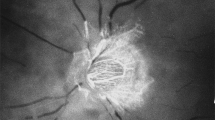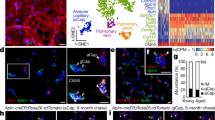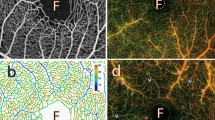Abstract
AN important feature of the peripheral circulation is the close correspondence between the local needs of a given tissue and the amount of blood supplying it. Controlling mechanisms, to accomplish this, must involve more than the vasoconstrictor and dilator reactions of the terminal arterioles. Krogh attempted to ascribe the relative autonomy of the capillary circulation to the widespread occurrence of contractile, pericapillary elements, the Rouget cells. This has been considerably debated, and has never been adequately demonstrated. Moreover, there is still the question concerning the manner in which an adequate venous return can be maintained in spite of the supposed interposition, between arterioles and venules, of a network of extremely pervious capillaries1. The techniques hitherto used for observing the capillary vessels have been either too fragmentary or have lacked the required delicacy of experimental approach for ascertaining their highly reactive and finely balanced behaviour.
This is a preview of subscription content, access via your institution
Access options
Subscribe to this journal
Receive 51 print issues and online access
$199.00 per year
only $3.90 per issue
Buy this article
- Purchase on Springer Link
- Instant access to full article PDF
Prices may be subject to local taxes which are calculated during checkout
Similar content being viewed by others
References
Chambers, R., and Zweifach, B. W., J. Cell. Comp. Physiol., 15, 255 (1940). Zweifach, B. W., Cold Spring Harbor Symposia on Quant. Biol., 8, 216 (1940).
Chambers, R., and Zweifach, B. W., Amer. J. Anat., 75, 173 (1944).
Zweifach, B. W., Anat. Rec., 74, 475 (1939).
Chambers, R., and Zweifach, B. W., Physiol. Rev., 27, 436 (1947).
Chambers, R., Ann. N.Y. Acad. Sci., 49, 549 (1948).
Zweifach, B. W., Lowenstein, B. E., and Chambers, R., Amer. J. Physiol., 142, 80 (1944).
Zweifach, B. W., Lee, R. E., Hyman, C., and Chambers, R., Ann. Surg., 120, 232 (1944).
Chambers, R., Zweifach, B. W., Lowenstein, B. E., and Lee, R. E., Proc. Soc. Exper. Biol. Med., 56, 127 (1944). Chambers, R., and Zweifach, B. W., Amer. J. Physiol., 150, 239 (1947).
Chambers, R., Zweifach, B. W., and Lowenstein, B. E., Amer. J. Physiol., 139, 123 (1943). Zweifach, B. W., Abell, R. G., Chambers, R., and Clowes, G. H. A., Surg. Gynec. and Obst., 80, 593 (1945).
Zweifach, B. W., "Evaluation of Therapy during Irreversible Hemorrhagic Shock on Basis of Changes in Omental Circulation" (in the press).
Author information
Authors and Affiliations
Rights and permissions
About this article
Cite this article
CHAMBERS, R. Blood Capillary Circulation Under Normal Conditions and in Traumatic Shock. Nature 162, 835–837 (1948). https://doi.org/10.1038/162835a0
Issue Date:
DOI: https://doi.org/10.1038/162835a0
This article is cited by
-
Basic features of the microcirculation in traumatic shock as revealed by intravital microscopy of the rat mesoappendix
Bulletin of Experimental Biology and Medicine (1969)
-
Neue Befunde �ber die Nervenversorgung des Gef��systems
Acta Neurovegetativa (1965)
-
Capillar ?contractilit�t?, Capillar ?sphincter? und ?Zentralkan�le? (?A.-V.-Bridges?)
Klinische Wochenschrift (1957)
-
Experimentelle Untersuchungen �ber die Entstehung der Stase
Virchows Archiv f�r Pathologische Anatomie und Physiologie und f�r Klinische Medizin (1955)
-
Kurzschlussdurchblutung
Klinische Wochenschrift (1954)
Comments
By submitting a comment you agree to abide by our Terms and Community Guidelines. If you find something abusive or that does not comply with our terms or guidelines please flag it as inappropriate.



